Connect the D435i Intel Realsense depth cameras to the ARC navigation messaging system (NMS) for distance detection and mapping.
How to add the Intel Realsense D435i robot skill
- Load the most recent release of ARC (Get ARC).
- Press the Project tab from the top menu bar in ARC.
- Press Add Robot Skill from the button ribbon bar in ARC.
- Choose the Navigation category tab.
- Press the Intel Realsense D435i icon to add the robot skill to your project.
Don't have a robot yet?
Follow the Getting Started Guide to build a robot and use the Intel Realsense D435i robot skill.
How to use the Intel Realsense D435i robot skill
Connect the D435i Intel Realsense camera to the ARC Navigation Messaging System (NMS) for distance detection and mapping. This should also work with other Intel RealSense depth camera models because the FOV and parameters are used from the device.
Main Screen
Select the device by the serial number. This allows multiple Intel Realsense devices to be added to a project.
START/STOP button connecting to the RealSense device.
Log window for status and errors.
Image Align
The Image Align tab allows you to select the area of the image that you wish to detect for the point cloud. For example, setting the detection too low will detect the floor at a close distance. Ideally, set the bar high enough to avoid detecting the floor.Adjust the top of the detected image range.
Adjust the bottom of the detected image range.
The detected image range is highlighted in purple.
Configuration
The configuration screen displays several options for customizing the device to work with your robot project.
Mounted Radius Offset in mm (input)
Offset of the sensor from the center of the robot. A positive number means the sensor is toward the rear; a negative number means the sensor is toward the front. The measurement is from the center of the robot. The sensor must sit aligned with the center of the robot, not toward the left or right. The sensor must face 0 degrees heading.
Sensor Width, Height, and Frame Rate (input)
Sensor resolution during initialization. If the values are changed from the default, obtain them from the Intel RealSense viewer. Changing these values may be necessary if using a sensor different from the D435i. Set both width & height to 0 for auto-size, which isn't the most efficient for performance.
Skip Scan Points X and Y (input)
The number of depth pixels to skip when processing the depth data. This is useful for lower CPU PCs or when high-resolution depth is not required. Since the sensor has a limited field of view (FOV), processing every depth pixel may not be necessary. If the sensor resolution is 1280x720, the CPU would be processing 921,600 depth points for every scan of the specified framerate. At 1280x720 @ 15 FPS, that's 13,824,000 depth points per second. If the Skip Scan Points for X & Y are set to 10 for that resolution/fps, the CPU would only need to process 9,216 depth points per scan (or 138,240 per second).
The editor will recommend a value for the best balance between performance and detection based on the sensor FOV.
Enable Video Stream (checkbox)
The camera video from RealSense can be pushed into a selected Camera Device. In the selected camera device, choose CUSTOM as the device type. This will accept the video feed from this robot skill. Ensure START is pressed on the selected camera device as well.
Use NMS (checkbox)
Enable pushing the data to the NMS to combine with a navigation robot skill.
Enable the Fake Pose hint checkbox
- Do not use if another robot skill provides pose data to NMS
- 3d Cameras do not provide enough data for SLAM systems to identify the position, so this isn't very useful. You would want at least two cameras (facing opposite directions) for this to work properly. Or combine with a lidar, etc..
SLAM systems, such as The Better Navigator (Hector), will require the robot's pose/position in cartesian coordinates to identify its position. This is generally provided by an odometry setup such as wheel encoders. If your robot does not have this, you can fake the pose hint by selecting this option. This will send 0,0 as the pose location of the robot to force The Better Navigator to render. Do not check this if you have another robot skill submitting pose data to the NMS!
Getting Started
At the time of this guide, the Intel Realsense Viewer being used is available here, in the Assets section of the release: https://github.com/IntelRealSense/librealsense/releases/tag/v2.55.1
Ensure the computer's USB 3 port is used. Second, load the Intel RealSense Viewer, which is available in the Intel Realsense SDK package. A prompt to "Enable USB Meta Data" may be displayed, a system-wide change. Ensure you answer ENABLE to that option. Lastly, update the firmware if there is a prompt to do so.
If the sensor works in the Intel RealSense viewer, it will work with this robot skill. Depending on the version of the sensor, you may need to configure the capture width/height/framerate. This can be done in the robot skill configuration screen. The RGB and Depth camera resolution values must be the same. You can use the Intel RealSense Viewer to see what values work for your camera. If the RGB camera is 640x480 x 15 FPS, the depth camera must have a supporting resolution with the same settings. This robot skill will parse the depth and RGB data together.
Using the RealSense viewer, select a profile and note the resolution it is set for. The "Hand" profile seems to work well, although a lower camera imager is ideal to limit the amount of processing on your PC.
Variables
This skill will create four global variables that scripts can reference.
$D435IsRunning - status of the D435 robot skill, whether connected to the sensor or not.
$D435FurthestDistanceCM - furthest distance detected
$D435FurthestDistanceDegree - furthest degree of the furthest distance CM variable.
$D435NearestDistanceCM - nearest distance detected
$D435NearestDistanceDegree - nearest degree of the closest distance CM variable.
ARC Navigation Messaging System
This skill is part of the ARC navigation messaging system. You are encouraged to read more about the messaging system to understand the available skills HERE. This skill is in level #3, group #1 in the diagram below. It contributes to telemetry positioning in the cartesian positioning channel of the NMS. Combining this skill with Level #3 Group #2 skills for obstacle avoidance works well. For Level #1, the Better Navigator robot skill is recommended.
Control Commands for the Intel Realsense D435i robot skill
There are Control Commands available for this robot skill which allows the skill to be controlled programmatically from scripts or other robot skills. These commands enable you to automate actions, respond to sensor inputs, and integrate the robot skill with other systems or custom interfaces. If you're new to the concept of Control Commands, we have a comprehensive manual available here that explains how to use them, provides examples to get you started and make the most of this powerful feature.
Control Command ManualcontrolCommand("Intel Realsense D435i", "Start") Starts the D435i robot skill.
controlCommand("Intel Realsense D435i", "Stop") Stops the D435i robot skill.

 Hardware Info
Hardware Info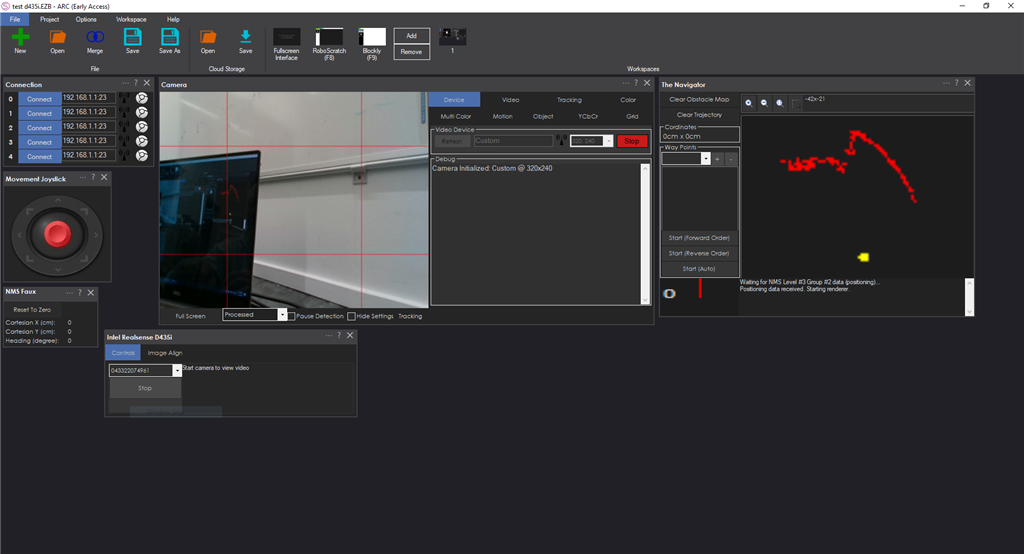
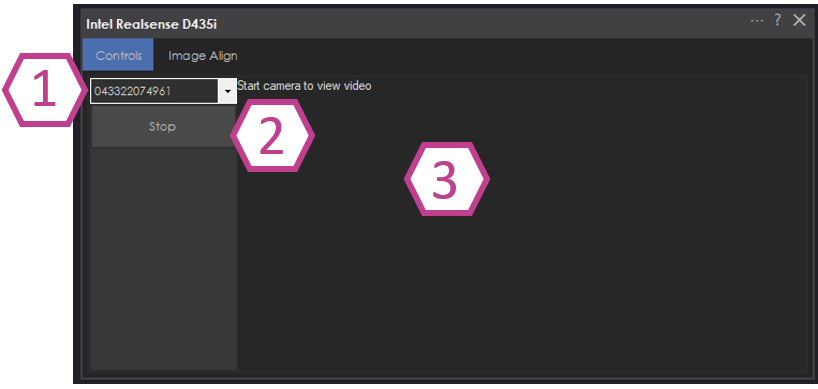
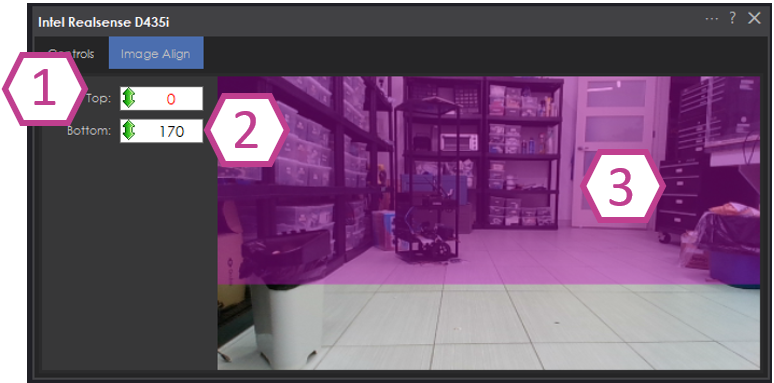
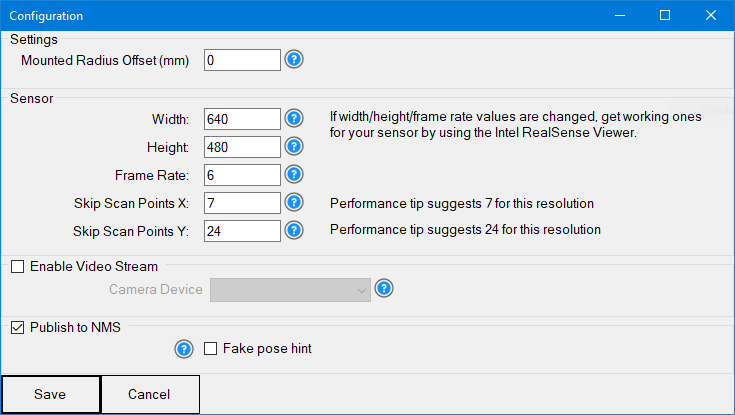
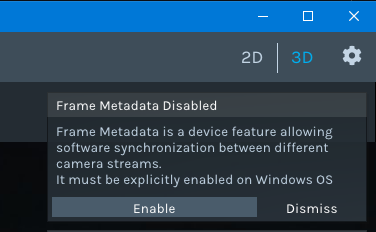
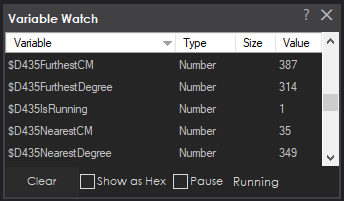


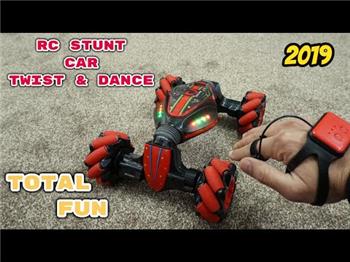

I googled for you:
they somehow magically use the usb2 channel over usbC and then internally have a different driver that operates at a low speed.
Is the IMU function of this skill used, or would it work with the less expensive d435?
Although I am currently satisfied with the T265 and Lidar, I am realizing that on a larger robot the Lidar will miss items near the floor, so I might want something mounted lower facing forward instead or to augment the Lidar.
You don’t need to mount it lower, and I wouldn’t recommend doing so. You adjust the area of the image to be detected. Check through live hacks for examples of what’s documented in the manual
there is no imu data stream returned from the device with intel’s sdk. I have tried to get the imu data as well with no success
I believe it will work with the earlier models. I can’t speak on the performance differences between models.
Thanks. I believe the d435 and d435i are identical except for the IMU as far as specs, but I will confirm. Not even sure I am going to get one yet, but it intrigues me...
Alan
If you do mount it low, angle it up. I think I read somewhere once about the preferred angle.
I confirmed from the Intel site that the d435 and d435i are identical specs except for the IMU, so I ordered a d435 to play with. Interestingly, one of the Amazon listings, and a Tiger Direct listing show a "30 pack" for just a few dollars more than a single unit. I asked Tigerdirect online to confirm if they are really shipping 30 units and they didn't respond, so for $10 more, I took the chance. If I get 30 of them, I'll sell them cheap or trade for other robot gear with members here..... (they did say shipping weight is 4.5 lbs and I know the device is only a few ounces so it is possible that they actually did bulk packaging and someone mis-priced it, but it happened at multiple sites (Walmart and a few other sites also had it listed the same way, but out of stock - one even said "bulk pack" which leads me to think I may actually get 30 of them......).
I got my d435 (it was not actually a 30 pack, but had clearly come from one. Didn't have a box, manual, tripod, etc... So, I spent more for less. Should send it back but I am anxious to get using it. Which leads to the problem.
Downloaded the driver and RealSense Viewer app from Intel. Plugged it in, tested it, and it works perfectly in the viewer.
Added the plugin to the project, and the camera object can see the RGB camera, but the plugin gives the following error when I attempt to connect (whether or not the RGB camera is connected, also tried in a new project after restarting ARC and only added the plugin with the same results):
Starting Intel RealSense D435... Couldn't resolve requests
No errors showing up in debug, just in the plugin window.